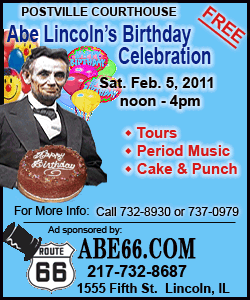| ||||||||||
| ||||||||||
Holgado told Asencio not to get into trouble, and that he'd get rid of the guy himself. "I took it upon myself to kill myself," Holgado recalled. Ironically, when he had a chance to see his son's suspected killer die, he chose to save him instead. During a nighttime drive, a big gray rabbit got caught in the headlights of Holgado's car as they rode along a river. Asencio, high on drugs or booze, insisted they stop so he could catch the animal. Chasing after the rabbit, Asencio fell into the water and screamed for help. He was drowning. "What should I do?" Holgado thought in the dark of the night. "If he drowns, no one will know the difference." But Holgado waded into the water and saved him. "I wanted to see this through to the end," Holgado said. "I did not want to leave it half-done." Asencio's lawyer said he can't be sure the four men ever believed Holgado's cover story. In the world of drugs, where most people have something to hide, his client "probably realized the person he was talking to was not who he said he was," said Manuel Hortas, who represented Asencio and another suspect. Seven months after "Pepe" appeared so abruptly in La Asuncion, he disappeared just as quickly. Holgado's day in court had arrived. ___ Holgado's undercover life had yielded more than a dozen 60-minute cassette tapes. But the most he had gotten out of Asencio was an admission he'd been with the other three suspects the night of the crime
-- and the young man vehemently denied taking part in the hold-up. In one session, Asencio says one of the four, Domingo Gomez Franco, gave another suspect a bag of bloody clothes to burn after the robbery. In others, people who knew the four recount they'd overheard them talking about divvying up loot from the heist. The strongest piece of the prosecution case was a sworn statement by Gomez Franco's girlfriend that he had told her in vivid detail about taking part, said Holgado's lawyer, Jose Miguel Ayllon. It was all suggestive material, but fell short of conclusive evidence. In the first trial in 1999, Holgado's tapes were not admitted as evidence, on the grounds that his attorney unveiled their existence only after the proceedings got under way. The four were acquitted: none of the blood samples or fingerprints found at the crime scene could be traced to them. In 2000, the Spanish Supreme Court ordered a retrial in which the tapes could be heard. In a retrial in 2003 the suspects were again acquitted
-- again due to lack of physical evidence. In August 2010 a judge accepted a petition from Holgado's attorney for DNA samples and fingerprints to be re-examined by the National Police. But forensic experts said last week there was no need to redo the tests because they were done right the first time round, and Ayllon said the judge is unlikely to reissue the order. None of the suspects could be reached for this story; defense lawyers said they didn't know how to reach them. Even as Holgado's quest to nab the killers went nowhere, his own life unraveled. He took early retirement so he could focus on his mission. His three surviving children
-- two sons and a daughter -- stopped speaking to him. "He's all about the publicity," said son Francisco, 37. Holgado and his wife Antonia separated about eight years ago; their marriage had long been troubled and Juan's death was the last straw. He visits the cemetery every day, and still wears mourning black all the time. Holgado has gone to great lengths to keep his mission in the public eye, throwing himself on rail tracks to block Madrid-bound trains, plastering the city with posters and graffiti, and twice interrupting football games, dodging security guards on the field with a banner and a bouquet of white carnations, winning standing ovations. While some locals urge him to get on with his life, they can't help but admire his perseverance. "He is a born fighter," said Pablo Berrera, 33, a bartender at a cafe where Holgado often goes to sip nonalcoholic beer. ___ These days, Holgado spends hours riding a gray mountain bike through the streets of Jerez, saying it helps clear his head. Before turning in, he takes one last bike ride: back to La Asuncion, to the grimy streets where he once mingled with his son's alleged killers, hoping to stumble on a lead. On one recent evening, he crossed paths with one of the men he blames for his son's murder. They recognized each other
-- Holgado on his bike, the other on foot -- but did not speak. Holgado, dressed in black as always, circled back and followed the man for a while. Then he headed home.
[Associated
Press;
Copyright 2011 The Associated Press. All rights reserved. This material may not be published, broadcast, rewritten or redistributed.
News | Sports | Business | Rural Review | Teaching & Learning | Home and Family | Tourism | Obituaries
Community |
Perspectives
|
Law & Courts |
Leisure Time
|
Spiritual Life |
Health & Fitness |
Teen Scene
Calendar
|
Letters to the Editor